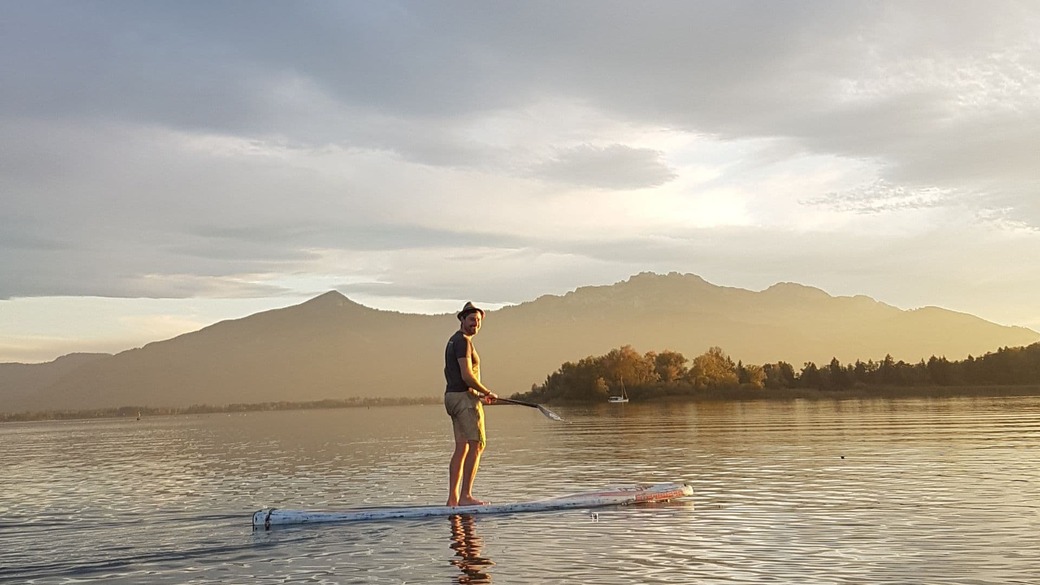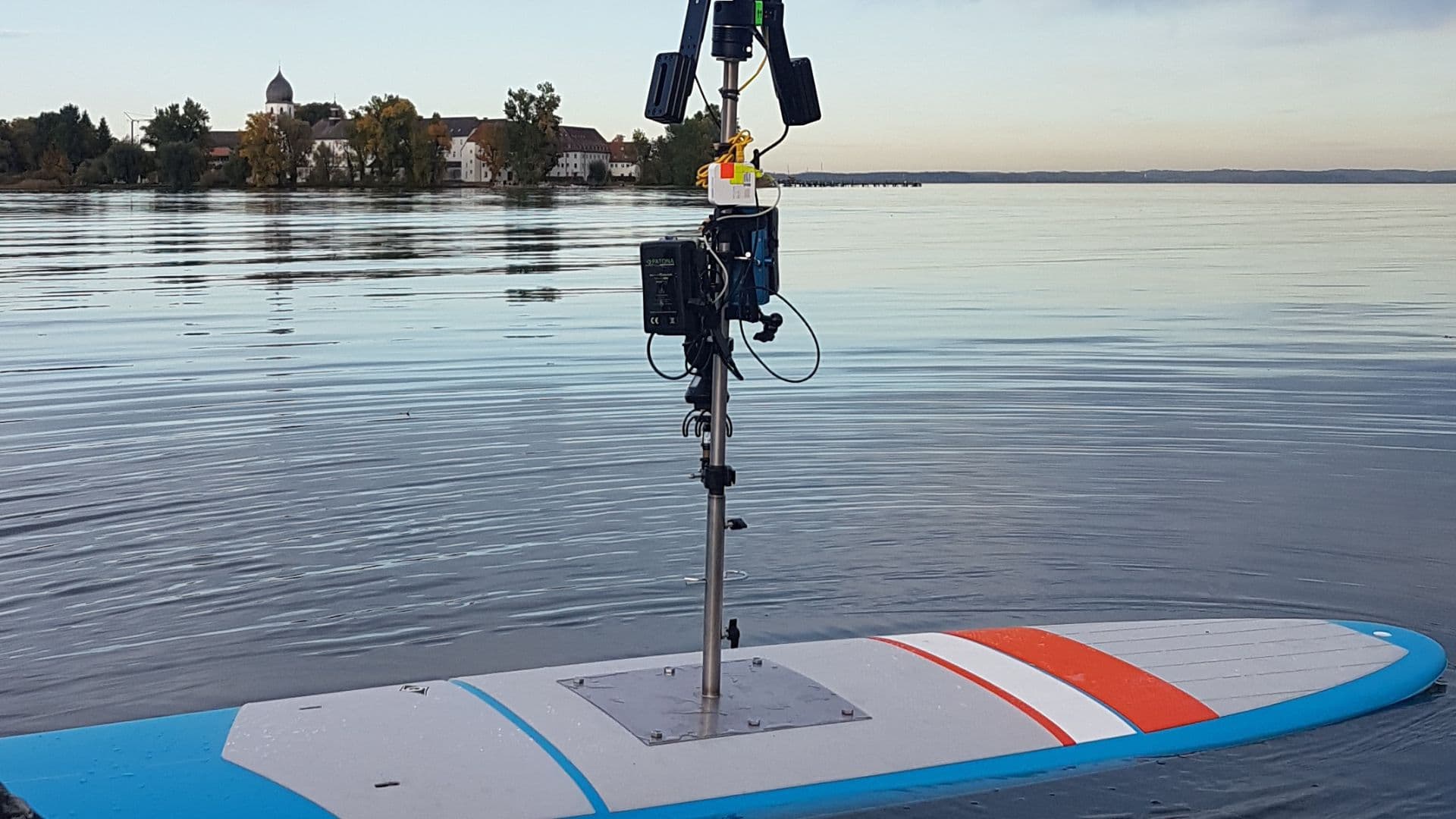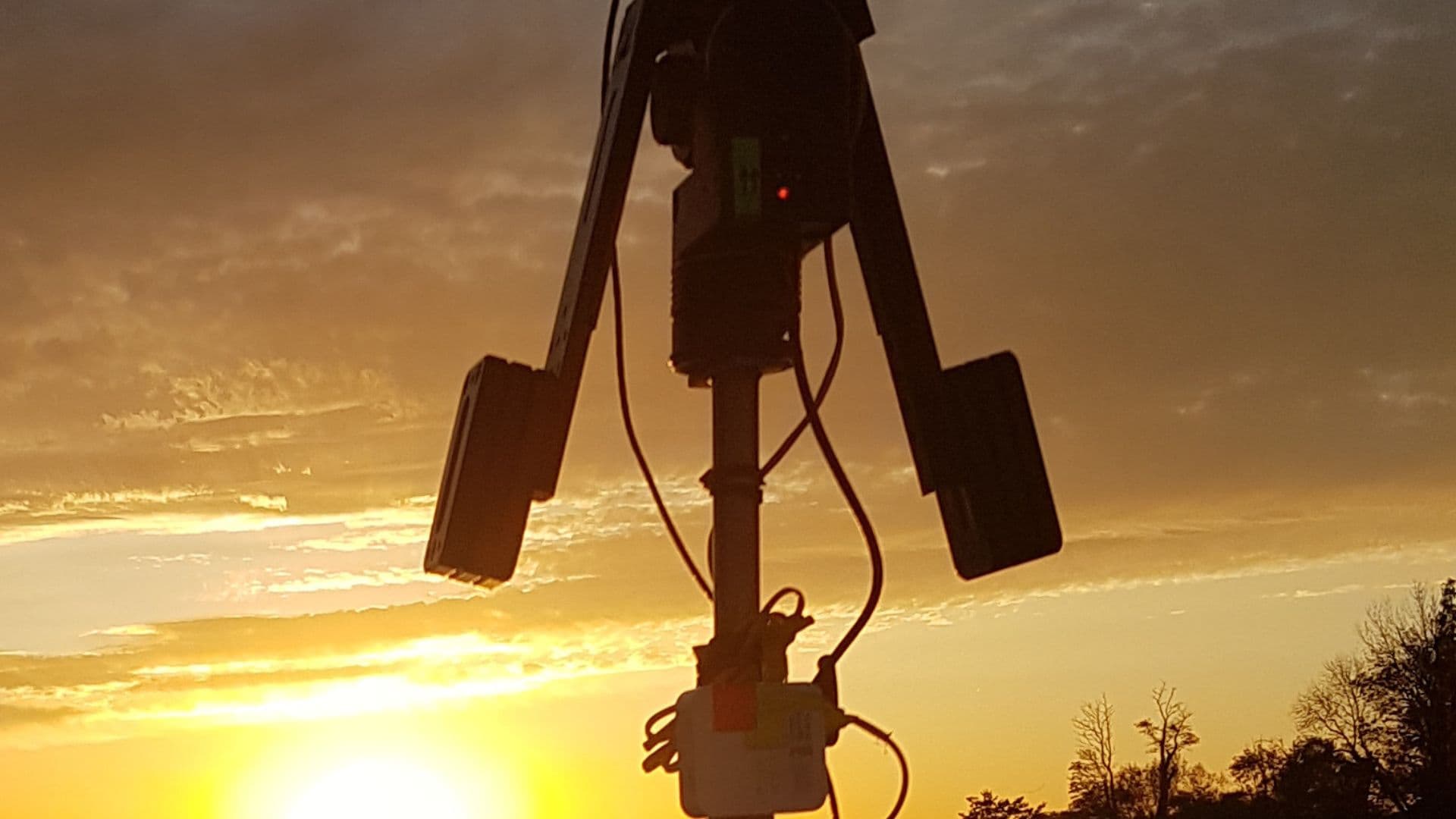
360 Video Production: Sunset Tour on Lake Chiemsee SUP
360 Video Production on Lake Chiemsee — a calm VR journey at water level, where image and sound move with you and the lake feels real. This project set out to answer a simple question: what does a sunset sound like when you don’t just see it, but truly experience it?
Why – Experiencing presence instead of just looking
When you watch a 360 video production, you can turn your gaze — but in many productions, the sound stays fixed. Our goal was to build an experience in which audio and image move together, so you feel surrounded by the lake, the light, and the direction of the world around you.
Immersive moments and personal presence were central, because only then do you feel as if you are standing on the water as the sun warms, the islands approach, and your ears follow where you turn. An emotional tour, not a spectacle
The tour moves along calm water past Herreninsel and its rose garden. You hear birds, insects, soft water, distant space — and you understand where you are without being told. The story is deliberately simple: a sunset tour shouldn’t rely on fast cuts, but on orientation, intimacy, and quiet intensity.
When the image is free, sound must lead. It slows time down, gives context, and guides attention. Talking, whether narration or dialogue, can deepen immersion and help the viewer understand what they’re experiencing. Built for real people to step into.
The original plan was a VR installation: visitors would stand on a stand-up paddle board, wear a headset, and look freely in all directions, coming as close to reality as possible.
After the planned launch at the tourism trade fair in Berlin was canceled, we created a social media version so more people could access it. The project was also presented in the “Talkback” format at the Tonmeistertagung and discussed as an example of immersive sound direction. Audio is especially important in these experiences, because what you hear can strongly increase the sense of presence and emotional connection.

How – Planning and preparation
Every successful 360° video production begins with careful planning, especially in VR and mixed reality, where traditional cinematic control doesn’t work the same way.
One key challenge is guiding viewers through the story without being able to force their gaze. Choosing the right technology is essential: Ambisonics microphones capture an authentic 3D sound field, which together with spatial audio formats such as 360 Reality Audio forms the base for immersive surround sound.
Before shooting, we aligned technical details: microphone and camera choice, axis coverage, sync between audio and image, voiceover capture, dialogue handling, and delivery formats (for Gear VR, smartphones, computers).
We also checked compatibility with common apps and tools early on and prepared for post-production so that individual audio takes and visual shots could later be woven into one coherent whole.
Careful shot planning ensured that every segment supported a seamless immersive experience. Modern audio editors and specialized software then allow shaping sound fields, placing details in 3D space, and guaranteeing audio quality across playback systems — from headphones and speakers to 5.1 setups.
With this level of preparation, the idea becomes an experience: Lake Chiemsee becomes tangible, and the viewer is invited to sink into the reality of a sunset as if they were there.

Filming and technology on the water
A 360° shoot on open water needs its own workflow. The camera was mounted on a stand-up paddle board that had to move very evenly. A diver pulled the board underwater using a rod, so motion stayed smooth and the crew stayed out of frame.
The team followed at a safe distance in a boat, triggering camera and audio and monitoring the wireless links. Because wireless is not always stable over hundreds of meters, we used transmitters that also recorded to SD cards. If the link failed, the original track was still safe.
The board carried a robust setup with V-mount batteries and a gimbal. Onshore, a small base was used to move gear to the islands. Many routes led through shallow water, so working in wetsuits was part of the job.
This kind of logistics decides whether a 360-degree video production runs smoothly, consistently, and repeatably — and the more reliable the movement, the easier it is to craft a clean mix later.
To capture Ambisonics audio, we used specialized microphones to enable an immersive sonic image. Voice also plays a crucial role here, because it can increase presence and emotional connection, especially in VR. Voiceover techniques are adapted for immersive media so narration can sit naturally within a 360° space.

Microphone placement and spatial clarity
Microphone placement was critical. We added a second recorder on a shock mount, but even then, mechanical vibrations from pulling the board transmitted strongly. The camera was also transmitting video data, which could cause interference.
To secure dialogue and other key sounds, the team used wireless systems, then complemented them with targeted ambience recordings. Choosing and testing the right microphones for each phase of production was essential.
The mix process often happens in a dedicated room, where the listening position is optimized for spatial accuracy. Trials and tests to decide formats, balance stereo and loudspeaker playback against immersive formats, and position sounds in 3D are indispensable.
The way the viewer sits in the middle of the experience, surrounded by the scene, defines 360° film. In post, graphics and motion graphics can be layered to strengthen visual storytelling, and CGI can replace elements that are not possible to shoot.
Immersive content in this form not only strengthens brand identity but also becomes a way to communicate mood, message, and emotion.
Spatial audio and impact
Ambisonics microphones can capture impressive all-around reality, but they are extremely sensitive to movement and vibration — an issue that becomes obvious on water. Our approach combined documentary ambience with deliberate post-production. Water, wind, paddle strokes, and distant calls were treated not as a single wall of noise, but as small narrative events.
Turn left, and the lake opens. Face the island, and the shoreline comes closer. The mix follows your gaze without overwhelming the senses. That is exactly what tourism clients want: people remember situations, not only images.
Credible 3D sound increases dwell time, encourages interaction, and builds desire for the place itself. This project shows that outdoor VR workflows can be executed reliably, with spatial recording, field production, metadata-based source positioning, and emotional sound design.
It also shows that restraint can outperform excess. Silence is a design tool that can make the perceived space feel larger.

Post production
The journey from raw footage to a finished 360° video is decided in post. Editing and stitching multiple camera angles into one seamless sphere requires specialized tools such as Adobe Premiere Pro or Blackmagic Design Fusion. The goal is that the audience never notices seams.
Sound design and sound mixing are equal parts of this stage. Using ambisonic recording and binaural rendering, every subtle shift in the environment — lapping water, insects, voices in the distance — is placed intentionally in 3D space and moves naturally with the viewer.
Post production aligns image and sound, refines detail, and delivers a polished result for platforms like YouTube, social media, VR headsets, and event installations.
The seamless integration of picture and audio not only strengthens immersion, it supports brand messaging and leaves a lasting impression.
What
In the end, the conclusion is clear. Orientation beats spectacle. Redundancy saves takes.
Ambisonics is powerful, but only as good as its mechanical isolation. A carefully curated mix can steer perception without stepping into the spotlight. That’s the difference between a video and a memory that stays with you — moments where you’re not just watching, but standing on the lake in warm evening light while the sound turns with you.
For the portfolio, this project demonstrates reliable outdoor VR workflow, spatial audio competence, and emotionally driven sound direction for tourism and place marketing.
Collaboration and location
- Audio production was led by Martin Rieger of VRTONUNG.
- Schwarzbild Medienproduktion and Visual Vitamin handled 360° video and VR implementation.
- As a Bavaria insider, Flo Weidlich contributed knowledge about locations and moods.
- The client was Bayern Tourismus Marketing GmbH.
- Filming took place on Lake Chiemsee in Bavaria, often near Übersee with views toward the Julius-Exter Promenade, inspired by local sundowner tours offered in the region.
Outlook
Producing a 360° video like this sunset tour blends technical expertise, creative storytelling, and an understanding of immersive media across all stages — capture, post, and delivery.
As VR and AR continue to evolve, 360° productions like this open new ways for brands and destinations to stand out, create connection, and turn moments into memories.
If you would like to create similar content together feel free to Reach out